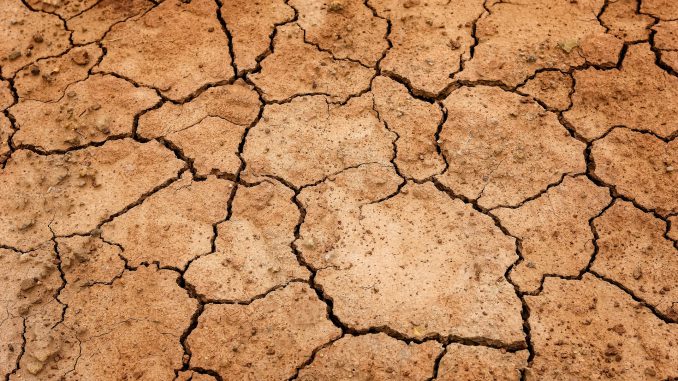
Faced with one of the worst droughts since the 1980s, Morocco has never been so threatened by water scarcity, as the country struggles to preserve its reserves due to delayed rainfall and growing demand. So far, the Kingdom’s dams are only 32.7% full, compared to 49.1% at the same time last year, according to figures presented by the Minister of Equipment and Water, Nizar Baraka, who went to the Infrastructure, Energy, Mines and Environment Commission at the House of Representatives to take stock of the current situation, which is very worrying from the point of view of observers.
With 5.3 billion cubic metres (m3) of reserves, Morocco is terribly short of water resources and remains threatened by shortage. This is even reflected in the share of each inhabitant, which remains derisory since it does not exceed 600 cubic metres. This is lower than the world average (1000 cubic metres per capita).
In the years to come, this phenomenon is likely to continue, as Nizar Baraka said that Morocco is likely to lose 30% of its rainfall by 2050. The situation in Morocco is so critical because of the perilous combination of rainfall deficits and declining reserves in the hydraulic basins. All the Kingdom’s basins are experiencing an alarming deficit, which is reaching worrying levels in the Bouregreg, Luxus, Souss Massa, Tensift, Oum-Errabia and Moulouya basins, with rates varying from 60% to 80%. This is partly due to the drop in rainfall recorded at the end of February compared to the same period last year. This rate was between 30 and 50% in the Guir-Ziz-Rheris and Draâ-Oued Noun water basins, between 60 and 70% in the Loukous, Bouregrag and Sakia El Hamra-Oued Eddaheb basins and between 71 and 80% in the Souss-Massa, Tensifet, Oum ErRbia and Moulouya basins. This situation is likely to worsen if the spring season proves to be as poor in terms of rainfall as in previous seasons.
It is clear that the country risks losing 44% of its annual rainfall if rain does not fall during the spring and summer seasons. The only hope is that the rainfall between March and August will be higher than in the September-March period. It is rare to see such a scenario, unless there is an exception. To explain the deep roots of the current state, the minister’s presentation highlights the effect of global warming on the exacerbation of the current drought, which has been going on for three years. Since 2001, the temperature in Morocco has risen palpably from an average of 17.7°c to 18.7°c, with a peak of 20°c in 2020. Water resources for irrigation have been in chronic deficit since the early 1990s.
For 18 years, the volume of water used in agriculture has been between 2% and 37% below the amount reserved. To counter this worrying situation, the ministry in charge intends to reinvigorate the water basins. In his speech, Nizar Baraka explained to the deputies that his department is in the process of drawing up several agreements with all the stakeholders in order to implement a battery of emergency measures aimed at ensuring, without any break, the supply of drinking water to all the areas under the jurisdiction of these basins.
This will require a budget of 2.42 billion dirhams (MMDH), including 1.318 MMDH for the Moulouya basin, 202 million dirhams for the Oum Er Rbia and 522 million dirhams for the Tensift. The government intends to act urgently in the areas most affected by the shortage. To this end, monitoring cells have been set up in all affected provinces and prefectures, the minister said, adding that work to supply rural centres and douars is going well. The aim is to achieve a sustainable water system, as provided for in the national drinking water supply programme. Regarding the current situation of drinking water supply in rural areas, the minister said that the national program for drinking water supply and irrigation 2020-2027 includes a special component to strengthen this project, with a budget of about 27 billion dirhams, before specifying that this component aims to generalize access to drinking water in rural areas through structuring projects and the fight against precariousness in some regions, especially in years of shortage.
To this end, Mr Baraka has reported the acceleration of work on a large number of projects concerning 820 rural centres and more than 18,000 douars. In parallel, the authorities are also focusing on prospecting. Nizar Baraka reported on the reinforcement of groundwater exploration operations for a better exploitation of groundwater. The national strategy is largely based on the desalination of sea water. Through this mechanism, the Ministry aims to supply the major coastal cities, including Casablanca, Agadir, Al-Hoceima, Essaouira, Boujdour, Tan-Tan, Sidi Ifni and Laâyoune. In order to increase the capacity of maritime water treatment, projects for the construction of new stations have been launched, in Casablanca and Dakhla.
These new projects are in the tendering phase. In addition to desalination, the authorities are betting on wastewater treatment, of which 71 million cubic metres are currently being mobilised. For his part, the Director General of the National Office of Electricity and Drinking Water (ONEE), Abderrahim El Hafidi, has announced the construction of 92 treatment plants, including 8 reserved for the desalination of sea water and eleven others specialised in the demineralisation of brackish water, as well as the digging of 1,800 boreholes and wells.

Be the first to comment